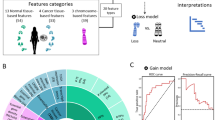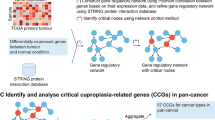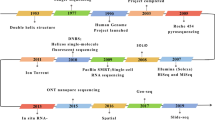Abstract
The high-risk of tumor initiation in patients with Turner syndrome (TS) characterized by X chromosome monosomy in women has been well established and aneuploidy, defined as an abnormal number of chromosomes, is a common feature in human cancer. However, the underlying mechanisms of X chromosome aneuploidy promoting tumorigenesis remain obscure. We propose that chromosome-wide gene dosage imbalance (CDI) may serve as an important mechanism. Here, we assess the relative expression ratios of X chromosome and autosomes (expression ratios of X:AA) between tumor samples and adjacent normal samples across 16 tumor types using expression datasets from The Cancer Genome Atlas (TCGA) project. Our results show that the expression ratios of X:AA in tumor samples are frequently rebalanced to a lower level compared to those in adjacent normal samples, which is termed chromosome-wide gene dosage rebalance (CDR) thereafter. Gene ontology (GO) analysis of differentially expression genes from X chromosome reveals that downregulation of multicellularity-related genes and upregulation of unicellularity-related genes in tumors form a distinctive feature and enrichment analysis shows that downregulated genes are enriched in tumor suppressor genes, which indicate that CDR benefits tumor progression. Further experimental results prove that disturbance of X chromosome expression by knocking down of XIST in breast cancer cells, which functions in initiation phase of X chromosome inactivation (XCI), inhibits tumor progression. Our results demonstrate that the prevalent CDRs across tumor types serve as an important mechanism in promoting tumor progression, which partially explains the high risk of tumor in patients with TS and also provides a new cancer therapy from the CDR perspective.





Similar content being viewed by others
References
Aken BL, Achuthan P, Akanni W, Amode MR, Bernsdorff F, Bhai J, Billis K, Carvalho-Silva D, Cummins C, Clapham P, Gil L, Giron CG, Gordon L, Hourlier T, Hunt SE, Janacek SH, Juettemann T, Keenan S, Laird MR, Lavidas I, Maurel T, McLaren W, Moore B, Murphy DN, Nag R, Newman V, Nuhn M, Ong CK, Parker A, Patricio M, Riat HS, Sheppard D, Sparrow H, Taylor K, Thormann A, Vullo A, Walts B, Wilder SP, Zadissa A, Kostadima M, Martin FJ, Muffato M, Perry E, Ruffier M, Staines DM, Trevanion SJ, Cunningham F, Yates A, Zerbino DR, Flicek P (2017) Ensembl 2017. Nucleic Acids Res 45:D635–D642
Barr ML, Moore KL (1957) Chromosomes, sex chromatin, and cancer. Proc Can Cancer Conf 2:3–16
Benjamini Y, Hochberg Y (1995) Controlling the false discovery rate—a practical and powerful approach to multiple testing. J R Stat Soc Ser B Methodol 57:289–300
Brown CJ, Ballabio A, Rupert JL, Lafreniere RG, Grompe M, Tonlorenzi R, Willard HF (1991) A gene from the region of the human X-inactivation center is expressed exclusively from the inactive X-chromosome. Nature 349:38–44
Chaligne R, Popova T, Mendoza-Parra MA, Saleem MAM, Gentien D, Ban K, Piolot T, Leroy O, Mariani O, Gronemeyer H, Vincent-Salomon A, Stern MH, Heard E (2015) The inactive X chromosome is epigenetically unstable and transcriptionally labile in breast cancer. Genome Res 25:488–503
Chen H, Lin F, Xing K, He X (2015) The reverse evolution from multicellularity to unicellularity during carcinogenesis. Nat Commun 6:6367
Chen DL, Ju HQ, Lu YX, Chen LZ, Zeng ZL, Zhang DS, Luo HY, Wang F, Qiu MZ, Wang DS, Xu DZ, Zhou ZW, Pelicano H, Huang P, Xie D, Wang FH, Li YH, Xu RH (2016) Long non-coding RNA XIST regulates gastric cancer progression by acting as a molecular sponge of miR-101 to modulate EZH2 expression. J Exp Clin Cancer Res 35:142
Chen DL, Chen LZ, Lu YX, Zhang DS, Zeng ZL, Pan ZZ, Huang P, Wang FH, Li YH, Ju HQ, Xu RH (2017) Long noncoding RNA XIST expedites metastasis and modulates epithelial–mesenchymal transition in colorectal cancer. Cell Death Dis 8:e3011
Clemente-Ruiz M, Murillo-Maldonado JM, Benhra N, Barrio L, Perez L, Quiroga G, Nebreda AR, Milan M (2016) Gene dosage imbalance contributes to chromosomal instability-induced tumorigenesis. Dev Cell 36:290–302
Clemson CM, McNeil JA, Willard HF, Lawrence JB (1996) XIST RNA paints the inactive X chromosome at interphase: Evidence for a novel RNA involved in nuclear chromosome structure. J Cell Biol 132:259–275
Dexter F (2013) Wilcoxon–Mann–Whitney test used for data that are not normally distributed. Anesth Analg 117:537–538
Dobin A, Davis CA, Schlesinger F, Drenkow J, Zaleski C, Jha S, Batut P, Chaisson M, Gingeras TR (2013) STAR: ultrafast universal RNA-seq aligner. Bioinformatics 29:15–21
Durrbaum M, Storchova Z (2016) Effects of aneuploidy on gene expression: implications for cancer. FEBS J 283:791–802
Fish EN (2008) The X-files in immunity: sex-based differences predispose immune responses. Nat Rev Immunol 8:737–744
Ganmore I, Smooha G, Izraeli S (2009) Constitutional aneuploidy and cancer predisposition dagger. Hum Mol Genet 18:R84–R93
Hasle H, Olsen JH, Nielsen J, Hansen J, Friedrich U, Tommerup N (1996) Occurrence of cancer in women with Turner syndrome. Br J Cancer 73:1156–1159
Heng H (2007) Cancer genome sequencing: the challenges ahead (vol 29, pg 783–794, 2007). Bioessays 29:1070
Heng HHQ (2009) The genome-centric concept: resynthesis of evolutionary theory. Bioessays 31:512–525
Heng HHQ, Liu G, Bremer S, Ye KJ, Stevens J, Ye CJ (2006) Clonal and non-clonal chromosome aberrations and genome variation and aberration. Genome 49:195–204
Heng HH, Stevens JB, Lawrenson L, Liu G, Ye KJ, Bremer SW, Ye CJ (2008) Patterns of genome dynamics and cancer evolution. Cell Oncol 30:513–514
Heng HH, Liu G, Stevens JB, Bremer SW, Ye KJ, Abdallah BY, Horne SD, Ye CJ (2011) Decoding the genome beyond sequencing: the new phase of genomic research. Genomics 98:242–252
Heng HH, Bremer SW, Stevens JB, Horne SD, Liu G, Abdallah BY, Ye KJ, Ye CJ (2013) Chromosomal instability (CIN): what it is and why it is crucial to cancer evolution. Cancer Metastasis Rev 32:325–340
Ji JG, Zoller B, Sundquist J, Sundquist K (2016) Risk of solid tumors and hematological malignancy in persons with Turner and Klinefelter syndromes: a national cohort study. Int J Cancer 139:754–758
Kachitvichyanukul V, Schmeiser B (1985) Computer-generation of hypergeometric random variates. J Stat Comput Simul 22:127–145
Lancar R, Funck-Brentano C (1999) Survival analysis example based on an event history model from a clinical trial in cardiology. Rev Epidemiol Sante Publique 47:613–618
Lanfranco F, Kamischke A, Zitzmann M, Nieschlag E (2004) Klinefelter’s syndrome. Lancet 364:273–283
Lee JT (2011) Gracefully ageing at 50, X-chromosome inactivation becomes a paradigm for RNA and chromatin control. Nat Rev Mol Cell Biol 12:815–826
Lee MC, Conway GS (2014) Turner’s syndrome: challenges of late diagnosis. Lancet Diabetes Endocrinol 2:333–338
Liao Y, Smyth GK, Shi W (2014) featureCounts: an efficient general purpose program for assigning sequence reads to genomic features. Bioinformatics 30:923–930
Mantel N (1966) Evaluation of survival data and two new rank order statistics arising in its consideration. Cancer Chemother Rep 50:163–170
Marahrens Y, Loring J, Jaenisch R (1998) Role of the Xist gene in X chromosome choosing. Cell 92:657–664
Nawata H, Kashino G, Tano K, Daino K, Shimada Y, Kugoh H, Oshimura M, Watanabe M (2011) Dysregulation of gene expression in the artificial human trisomy cells of chromosome 8 associated with transformed cell phenotypes. Plos One 6:e25319
Pavelka N, Rancati G, Zhu J, Bradford WD, Saraf A, Florens L, Sanderson BW, Hattem GL, Li R (2010) Aneuploidy confers quantitative proteome changes and phenotypic variation in budding yeast. Nature 468:321–325
Penny GD, Kay GF, Sheardown SA, Rastan S, Brockdorff N (1996) Requirement for Xist in X chromosome inactivation. Nature 379:131–137
Perry PM (1971) Evaluation of breast tumour cellular sex chromatin (Barr body) as an index of survival and response to pituitary ablation. Br J Surg 58:294–295
Pinheiro I, Dejager L, Libert C (2011) X-chromosome-located microRNAs in immunity: might they explain male/female differences? The X chromosome-genomic context may affect X-located miRNAs and downstream signaling, thereby contributing to the enhanced immune response of females. Bioessays 33:791–802
Plath K, Mlynarczyk-Evans S, Nusinow DA, Panning B (2002) Xist RNA and the mechanism of X chromosome inactivation. Annu Rev Genet 36:233–278
Richardson AL, Wang ZC, De Nicolo A, Lu X, Brown M, Miron A, Liao X, Iglehart JD, Livingston DM, Ganesan S (2006) X chromosomal abnormalities in basal-like human breast cancer. Cancer Cell 9:121–132
Robinson MD, McCarthy DJ, Smyth GK (2010) edgeR: a bioconductor package for differential expression analysis of digital gene expression data. Bioinformatics 26:139–140
Scott RH, Stiller CA, Walker L, Rahman N (2006) Syndromes and constitutional chromosomal abnormalities associated with Wilms tumour. J Med Genet 43:705–715
Stevens JB, Horne SD, Abdallah BY, Ye CJ, Heng HH (2013) Chromosomal instability and transcriptome dynamics in cancer. Cancer Metastasis Rev 32:391–402
Timp W, Feinberg AP (2013) Cancer as a dysregulated epigenome allowing cellular growth advantage at the expense of the host. Nat Rev Cancer 13:497–510
Xiong YY, Chen XS, Chen ZD, Wang XZ, Shi SH, Wang XQ, Zhang JZ, He XL (2010) RNA sequencing shows no dosage compensation of the active X-chromosome. Nat Genet 42:U1043–U1029
Ye CJ, Liu G, Bremer SW, Heng HHQ (2007) The dynamics of cancer chromosomes and genomes. Cytogenet Genome Res 118:237–246
Yildirim E, Kirby JE, Brown DE, Mercier FE, Sadreyev RI, Scadden DT, Lee JT (2013) Xist RNA is a potent suppressor of hematologic cancer in mice. Cell 152:727–742
Yu GC, Li F, Qin YD, Bo XC, Wu YB, Wang SQ (2010) GOSemSim: an R package for measuring semantic similarity among GO terms and gene products. Bioinformatics 26:976–978
Yu GC, Wang LG, Han YY, He QY (2012) clusterProfiler: an R package for comparing biological themes among gene clusters. Omics J Integr Biol 16:284–287
Zhang GW, Xia BS, Liu T, Zhang JF, Niu M, Xu SP, Bai XN, You ZL, Xu QJ, Zhang Y, Cleveland J, Zhang DK, Pang D (2016) A high-quality biobank supports breast cancer research in Harbin, China. Biopreserv Biobank 14:375–382
Acknowledgements
We thank Drs. Ceshi Chen, Jiali Li, Qingpeng Kong, Benyang Liao, Binghui Li and Weimin Ci for constructive suggestions, and thank Dr. Christine Watts for text editing.
Funding
This work was funded by the Strategic Priority Research Program of the Chinese Academy of Sciences [Grant no. XDB13030400], Yunnan Applied Basic Research Projects [Grant no. 2016FB038], National Science Foundation of China [Grant no. 31371502] and Open Project from State Key Laboratory of Genetic Resources and Evolution [Grant nos. GREKF15-11, GREKF14-05].
Author information
Authors and Affiliations
Corresponding author
Ethics declarations
Conflict of interest
The author(s) declare that he has no conflict of interest.
Ethical approval
This article does not contain any studies with human participants or animals performed by any of the authors.
Additional information
Communicated by S. Hohmann.
Electronic supplementary material
Below is the link to the electronic supplementary material.
Rights and permissions
About this article
Cite this article
Zhang, H., Yang, X., Feng, X. et al. Chromosome-wide gene dosage rebalance may benefit tumor progression. Mol Genet Genomics 293, 895–906 (2018). https://doi.org/10.1007/s00438-018-1429-2
Received:
Accepted:
Published:
Issue Date:
DOI: https://doi.org/10.1007/s00438-018-1429-2




